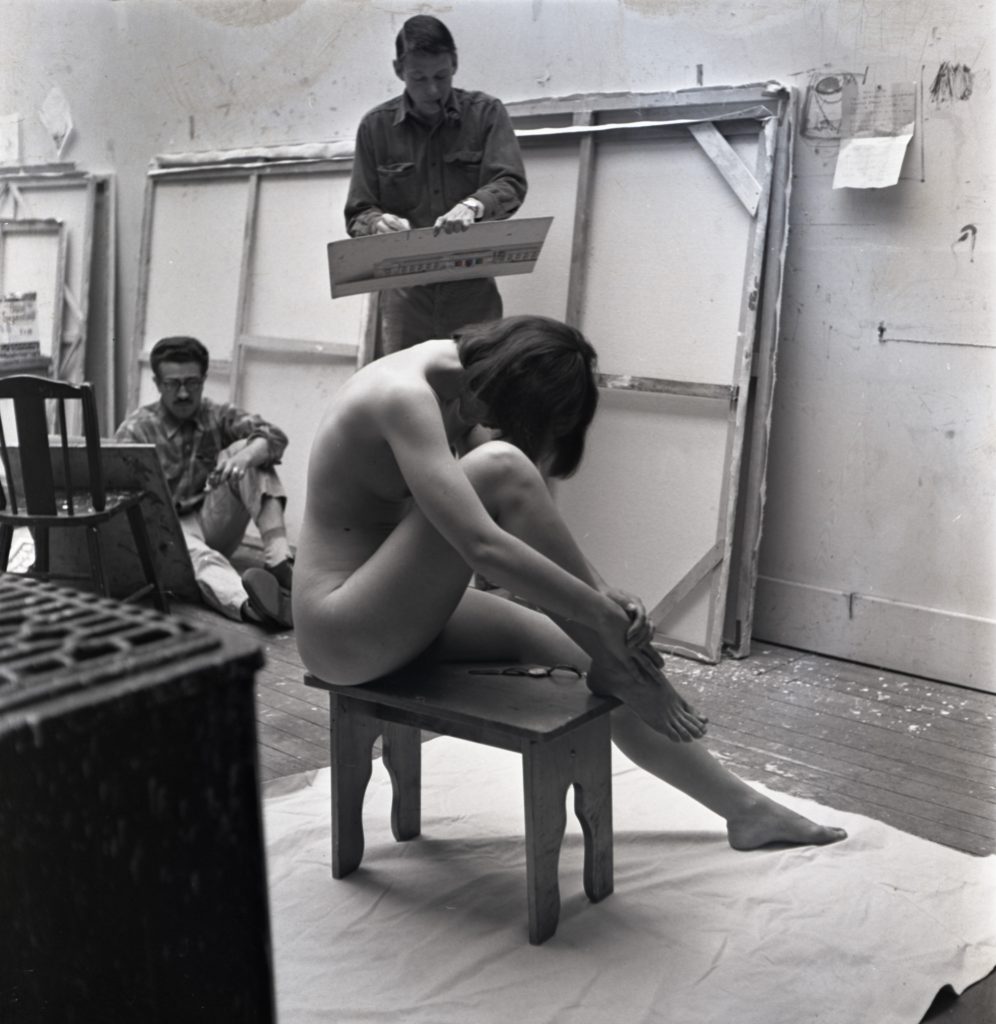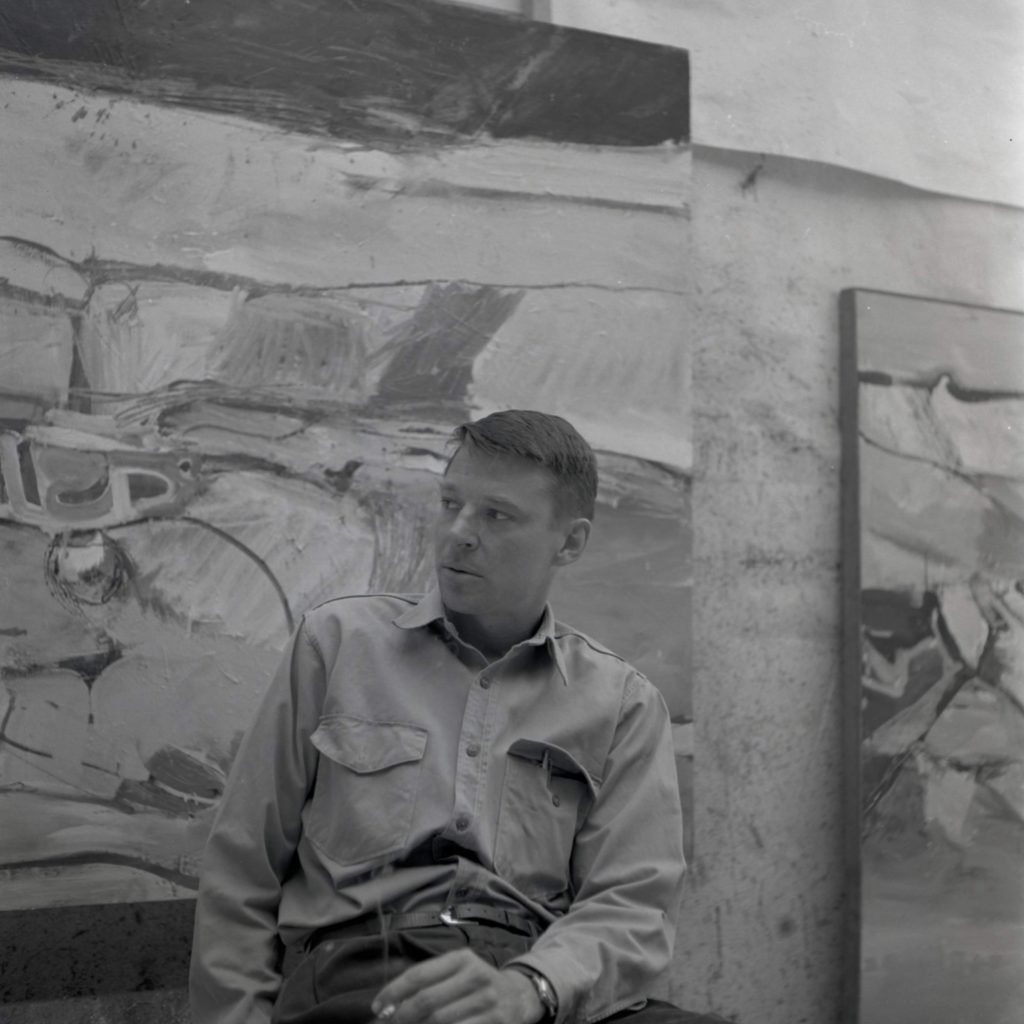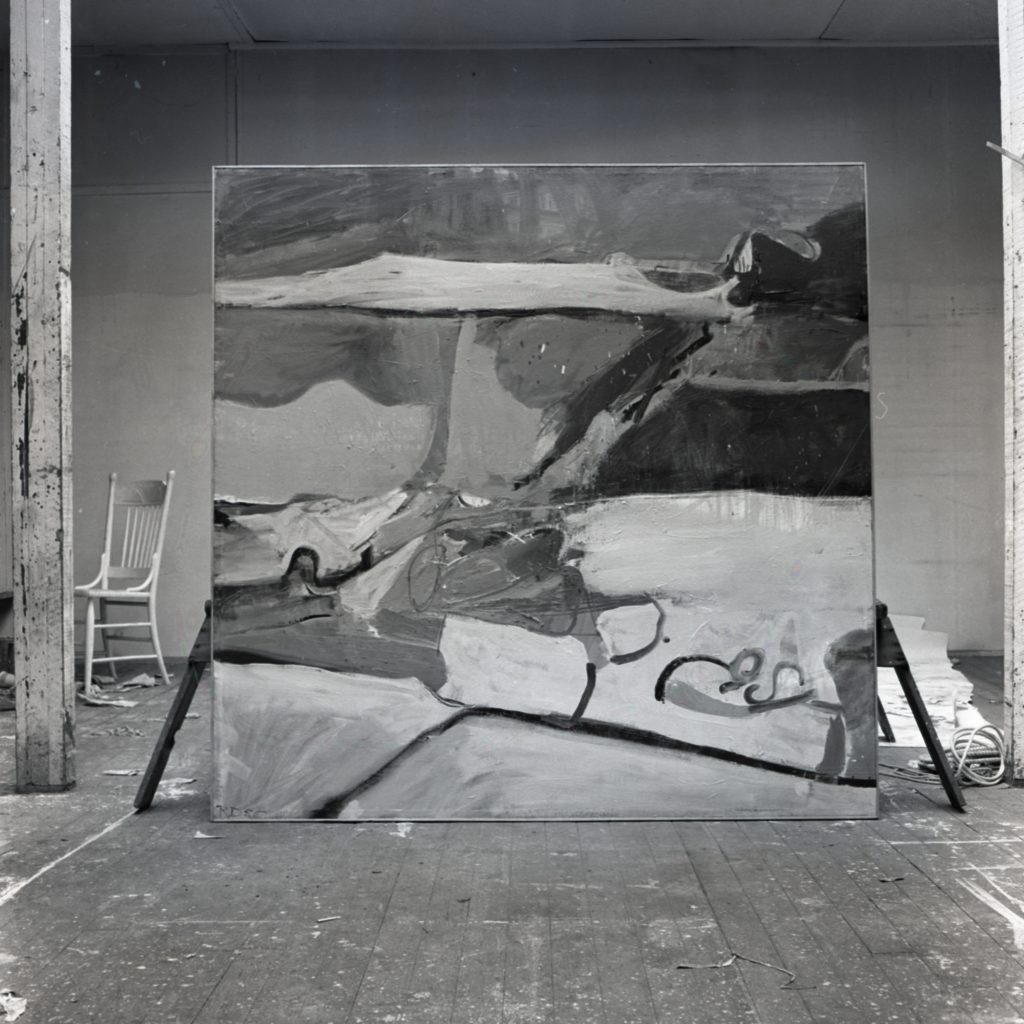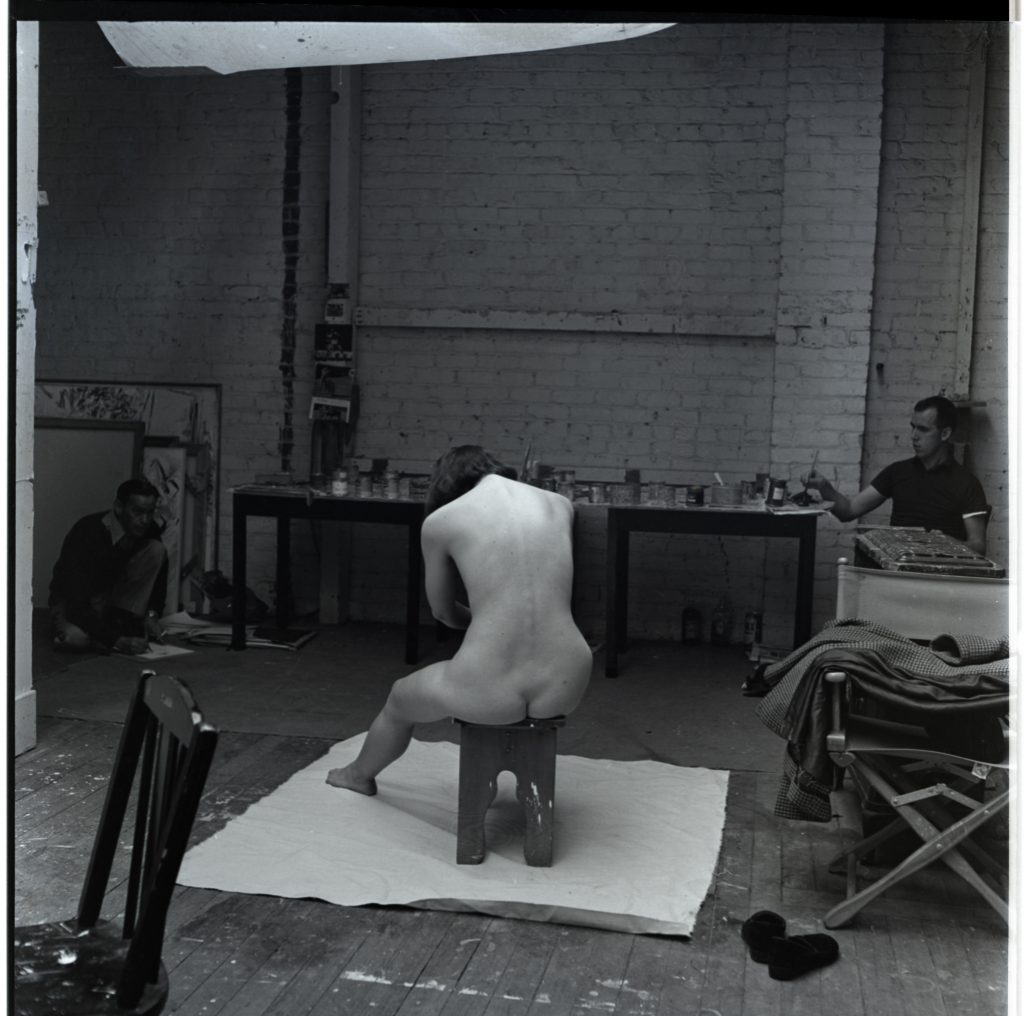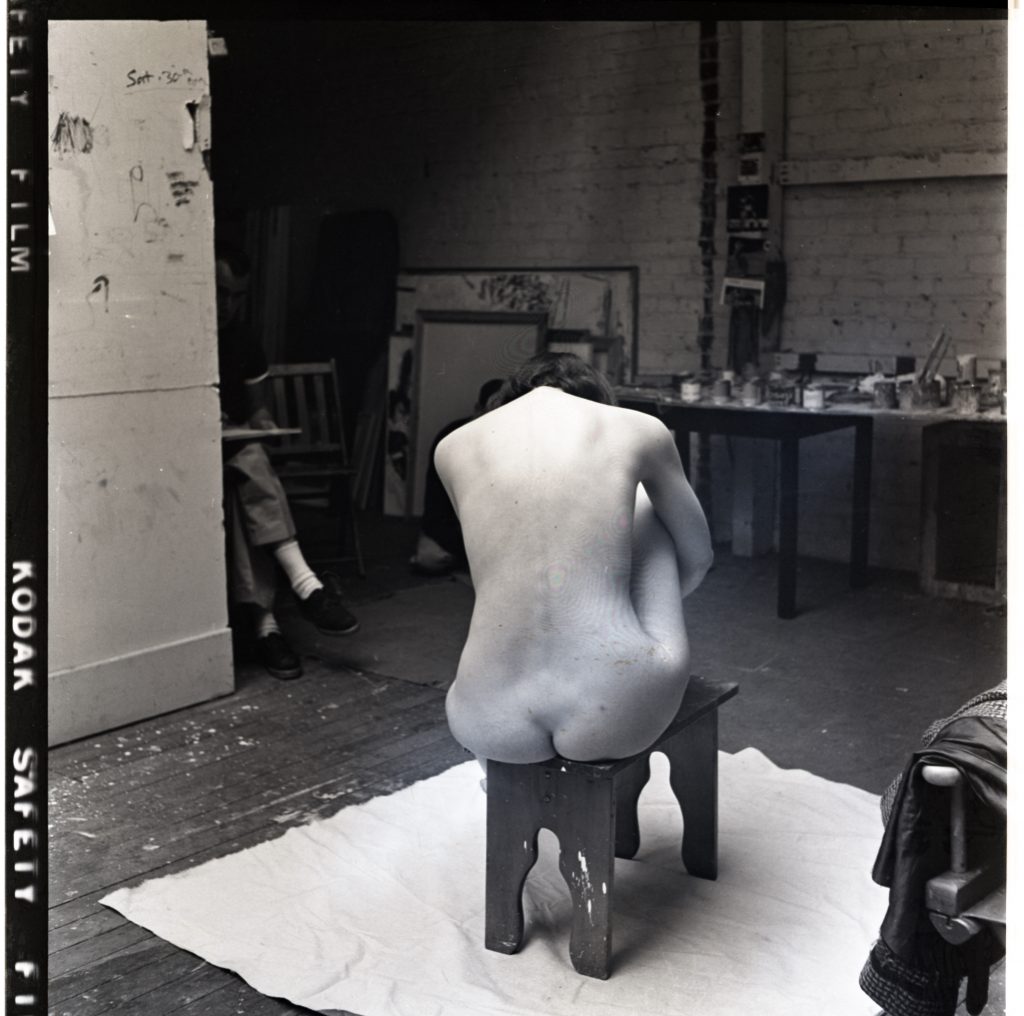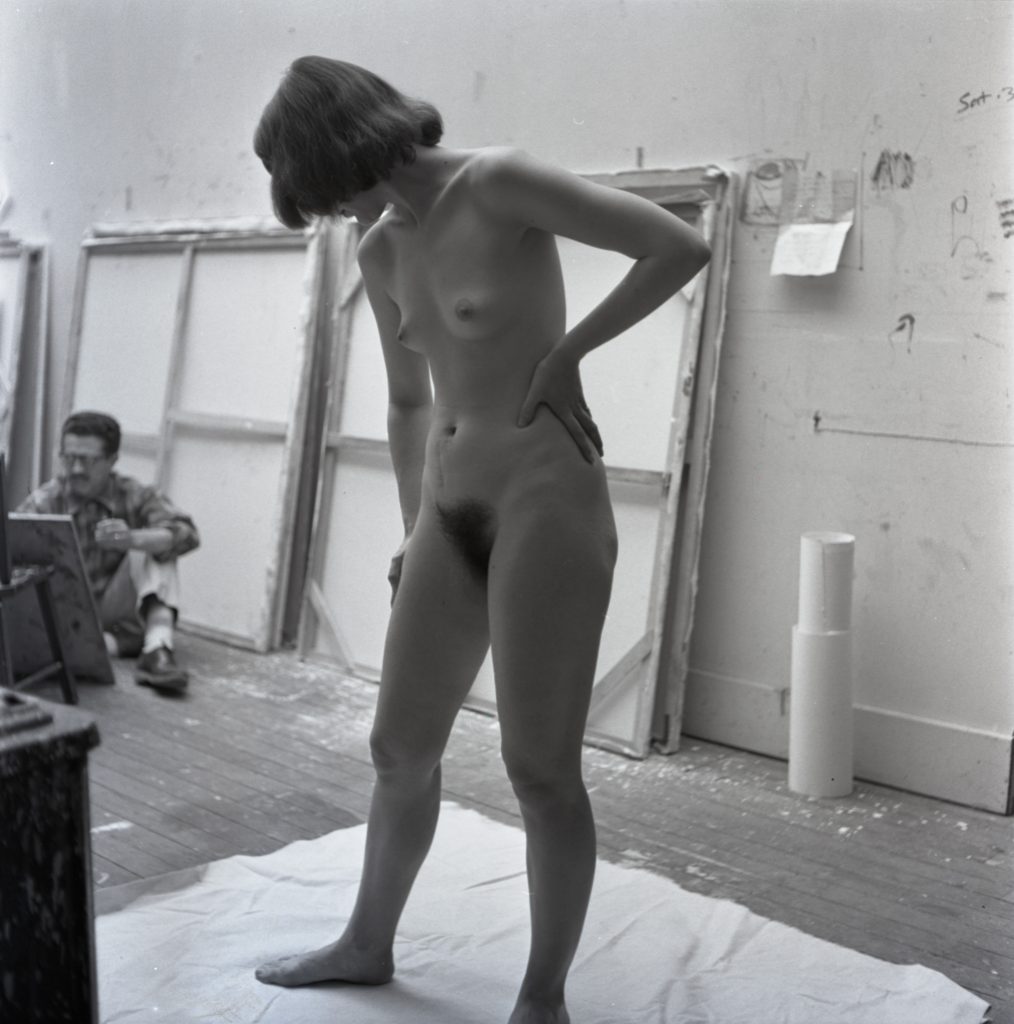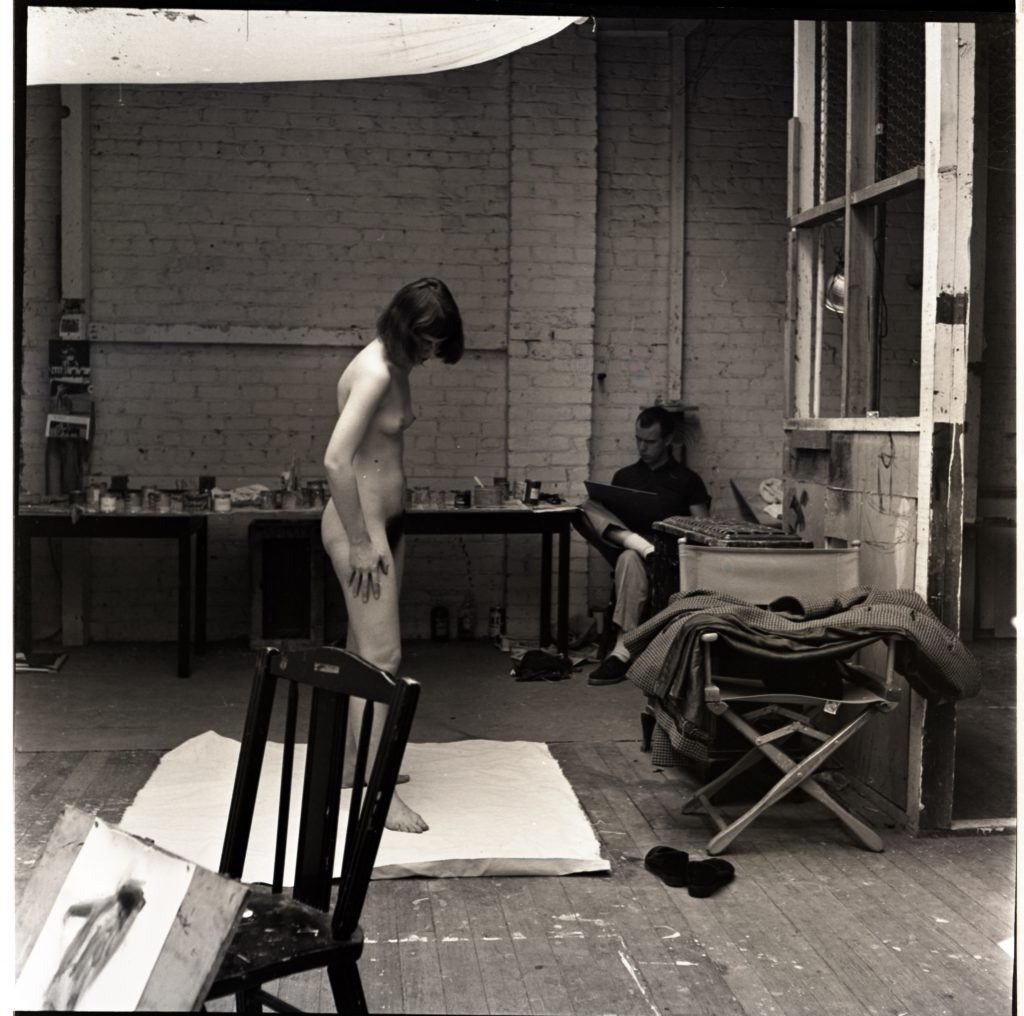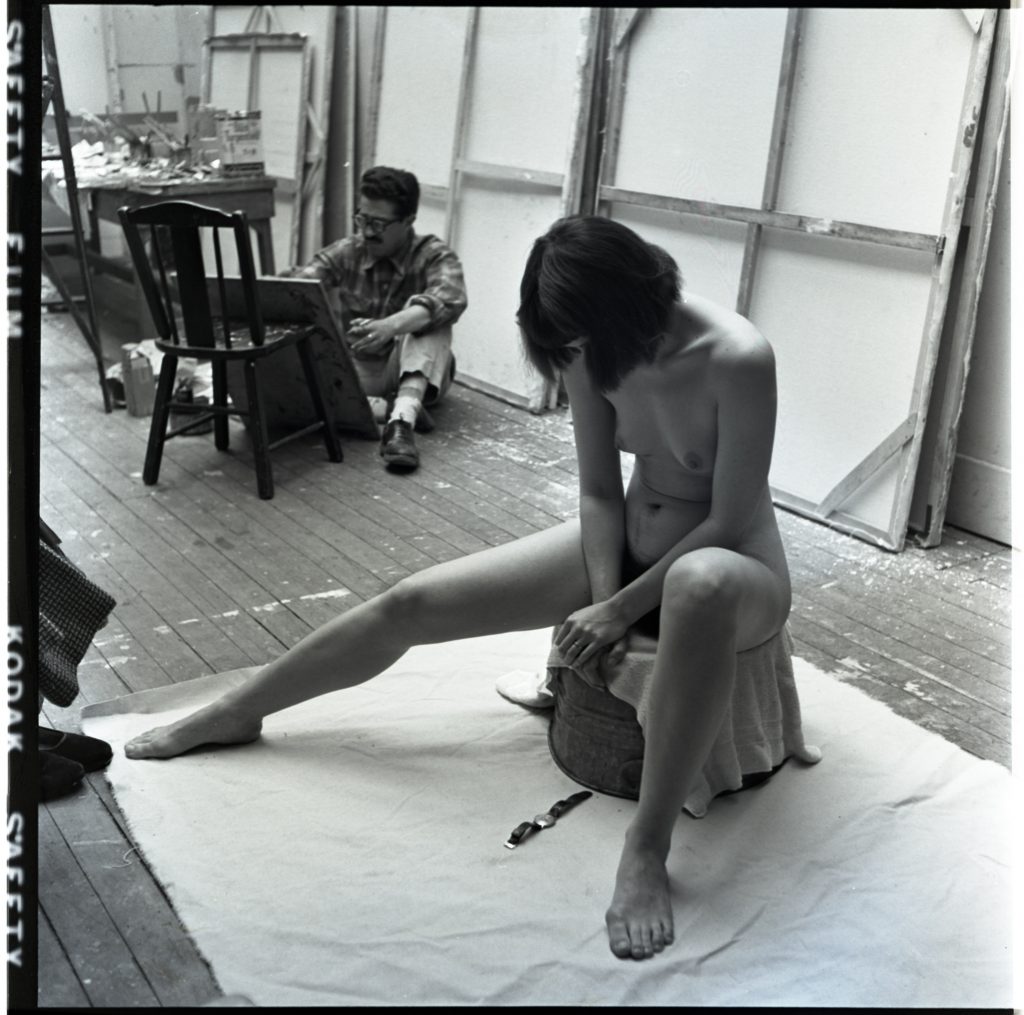Lincoln Yamaguchi
By Daisy Murray Holman
April 4, 2019
In 1955 Richard Diebenkorn was 33 years old and working out of a two-story brick building on Shattuck Avenue in Berkeley, California. The landlord had converted the second floor into artist studios, and Diebenkorn rented a space alongside his friends Paul Wonner and Theophilus “Bill” Brown. Tired of working out of his railroad apartment—an inconvenience to his wife and young children—the artist moved into the new studio, lit from above by a large skylight. The artist’s views into this space are few: only a handful of slides by Diebenkorn exist. But an amateur photographer named Lincoln Yamaguchi immortalized the studio where Diebenkorn produced most of his abstract Berkeley series while capturing a key moment in the Bay Area Figurative movement. It was in the mid-1950s and at the Shattuck studios that the legendary drawing sessions from a live model with David Park and Elmer Bischoff were formalized.
For many years, one of the photographs Yamaguchi took was well known but the photographer had not been identified. This striking image of Diebenkorn and Nathan Oliveira, drawing a nude model, was widely reproduced from a scrapbook among Bill Brown’s papers at the Archives of American Art. In 2014 the Foundation, while in the final stages of completing Richard Diebenkorn: The Catalogue Raisonné, was also receiving requests for exhibition and publication support. One of the most frequent requests was for one specific image, that of the nude model in the foreground with Richard Diebenkorn, standing, and Nathan Oliveira, sitting, both drawing the model as she posed. The remarkable concentration of the two artists and the utter boredom of their female subject are evident. The air between them is both clinical and thick with concentration. The photograph is of high quality, with a clean focus, balanced light, and thoughtful composition. It does not appear to be a snapshot taken by a fellow painter; it appears to have been taken for a purpose. The photographer had worked without disturbing these focused and private men, remaining anonymous in the shadows. The monograph Nathan Oliveira by Peter Selz, published in 2002, led us to the identity of Lincoln Yamaguchi. A quick search located him in Stockton, California, only a few hours from the Foundation’s offices.
A few weeks later we were on our way to meet “Linc,” who explained that he briefly romanced photography while studying to become an optometrist. In the early 1950s Yamaguchi’s friend lived on Haste Street in Berkeley, and his neighbor was Bill Brown. Yamaguchi and Diebenkorn met, and the painter hired Yamaguchi to photograph a few of his works for an exhibition. He then stuck around to photograph the drawing session with Wonner, Brown, Oliveira, and Park. He remembered Diebenkorn as a nice guy who couldn’t afford a professional photographer.
When we met Yamaguchi in 2014 he was still in possession of all of his negatives, which he’d kept in perfect condition. He immediately opened his home to us and told us stories of his life, which was dramatically different from the men in the drawing session. Yamaguchi is an American of Japanese descent. While many of the artists at 2571 Shattuck served in WWII, Linc and his family were refugees living in Utah, where they’d moved to escape the wartime internment camps.
Following our visit, Linc Yamaguchi graciously donated all of his photographs to the Richard Diebenkorn Foundation, and we are thrilled to present them here, in their entirety, for the first time. Learning of his identity allows us to properly credit the individual who has gifted us with tremendous visual insight into one working environment of Bay Area Figurative artists. The bundle includes a rare capture of Diebenkorn’s friend and mentor, David Park, visible in one corner of the room. It is one of the few surviving images showing Diebenkorn and Park together.
The photographs provide rich glimpses of these artists at work in the 1950’s. We are forever grateful to Yamaguchi.
